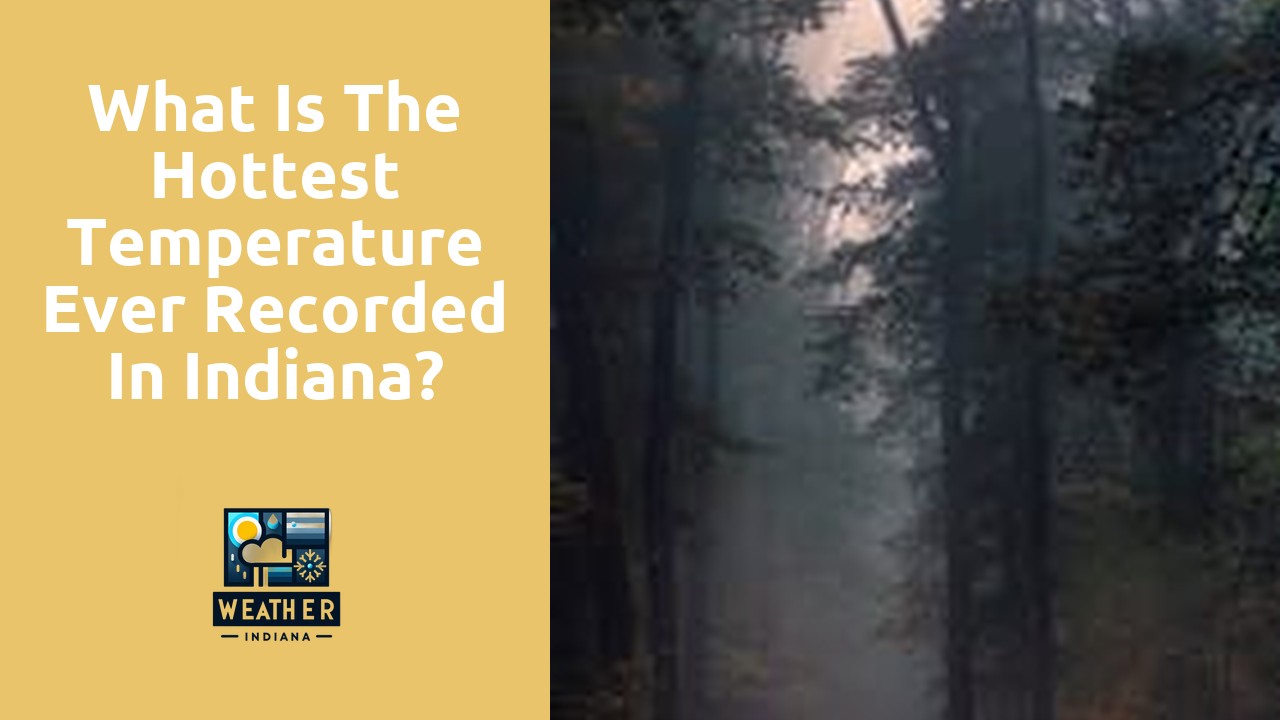Table Of Contents
Heatwave Preparedness and Response in Indiana
Heatwaves pose a significant threat to public health and safety in Indiana, especially during the summer months when temperatures can soar to dangerous levels. To mitigate the risks associated with extreme heat events, it is crucial for the state to have effective heatwave preparedness and response plans in place. These plans should involve a coordinated effort between government agencies, emergency services, healthcare providers, and community organizations to ensure a swift and efficient response to heat-related emergencies.
In Indiana, heatwave preparedness initiatives typically include public awareness campaigns to educate residents on the signs of heat-related illnesses and the importance of staying cool and hydrated during hot weather. Additionally, cooling centers are often set up in designated locations to provide relief for those without access to air conditioning. Emergency response teams are also trained to quickly respond to heat-related emergencies and provide medical assistance to those in need. By proactively preparing for heatwaves and having a coordinated response system in place, Indiana can better protect its residents from the dangers of extreme heat.
Strategies for Staying Safe in Hot Weather
When facing extremely hot weather in Indiana, it is crucial to prioritize staying safe and healthy. One of the most important strategies is to stay hydrated by drinking plenty of water throughout the day. Dehydration can occur rapidly in high temperatures, so it is essential to continuously replenish fluids.
Additionally, it is advisable to avoid prolonged exposure to the sun during peak hours, typically between 10 a.m. and 4 p.m. Seeking shade or staying indoors in air-conditioned spaces can help prevent heat-related illnesses such as heat exhaustion or heatstroke. Wearing light-colored and loose-fitting clothing can also assist in keeping the body cool. Remember to check on vulnerable populations, such as the elderly or young children, who may be more susceptible to extreme heat.
Monitoring and Forecasting Temperature Extremes
Monitoring and forecasting temperature extremes in Indiana is crucial for ensuring the safety and well-being of the state’s residents. By utilizing advanced technologies and weather monitoring systems, meteorologists and scientists can accurately predict when heatwaves are likely to occur, allowing for timely warnings and preparedness measures to be put in place. This proactive approach enables local authorities to implement strategies to mitigate the impact of extreme temperatures on vulnerable populations, such as the elderly, children, and individuals with underlying health conditions.
Additionally, monitoring temperature extremes helps in understanding the patterns and trends of heatwaves in Indiana over time. By analyzing historical temperature data and comparing it with current observations, researchers can gain valuable insights into how the climate is changing and evolving in the region. This information is essential for developing effective long-term strategies to address the challenges posed by increasing temperatures and recurring heatwaves in Indiana.
Tools and Technologies for Predicting Heatwaves
One of the key tools used for predicting heatwaves is the use of numerical weather prediction models. These models take into account a variety of atmospheric variables such as temperature, humidity, wind speed, and pressure to forecast the likelihood of heatwave events. By analyzing these data points, meteorologists can anticipate when and where heatwaves are likely to occur, allowing for better preparedness and response measures to be implemented in advance.
Additionally, advancements in remote sensing technologies have greatly improved our ability to monitor and predict heatwaves. Satellite images, for example, can provide valuable information about sea surface temperatures, atmospheric moisture content, and cloud cover, all of which play a role in the formation of heatwaves. By combining data from remote sensing technologies with numerical weather prediction models, meteorologists can enhance the accuracy of their heatwave forecasts, helping to minimize the impact of these extreme weather events on communities.
Comparative Analysis of Indiana’s Temperature Records
When looking at the historical temperature records of Indiana, it becomes evident that the state has experienced a diverse range of temperature extremes. From hot summers to bitterly cold winters, Indiana’s climate is characterized by significant temperature variations throughout the year. By analyzing these records, researchers have been able to identify trends and patterns in the state’s temperature fluctuations over time.
Comparatively, the hottest temperature ever recorded in Indiana was 116°F (46.7°C) in 1936 in Collegeville. This extreme temperature serves as a stark reminder of the intensity of heatwaves that can impact the region. Understanding these temperature records is crucial for better preparing and responding to extreme heat events in the future, as they provide valuable insights into the state’s climate history and potential implications for the changing climate.
Contrasting Hot and Cold Spikes
Contrasting hot and cold spikes in Indiana’s temperature records provides valuable insights into the state’s climate variations. During extreme heatwaves, temperatures can soar well above 100°F, especially in urban areas where the heat island effect exacerbates the situation. In contrast, severe cold spikes can bring temperatures down to subzero levels, posing risks to public health and infrastructure.
Understanding the patterns and trends of these contrasting temperature spikes is crucial for developing effective heatwave and cold wave response strategies. By analyzing past records and identifying the factors contributing to these extreme temperature events, authorities in Indiana can better prepare for and mitigate the impacts of such occurrences in the future.
FAQS
What is the hottest temperature ever recorded in Indiana?
The hottest temperature ever recorded in Indiana is 116°F (46.7°C), which was documented in Collegeville on July 14, 1936.
How does Indiana’s hottest temperature compare to other states?
Indiana’s hottest temperature of 116°F falls in line with the extreme temperatures experienced in other states during heatwaves, showcasing the intensity of heatwaves across the country.
Are heatwaves becoming more common in Indiana?
There is evidence to suggest that heatwaves are becoming more frequent and intense in Indiana, highlighting the importance of heatwave preparedness and response strategies.
How can individuals stay safe during periods of extreme heat in Indiana?
To stay safe during extreme heat in Indiana, individuals should stay hydrated, avoid outdoor activities during peak heat hours, and seek out air-conditioned spaces to cool off.
Can technology help predict heatwaves in Indiana?
Yes, advancements in monitoring and forecasting technologies have made it possible to predict heatwaves in Indiana, allowing for better preparedness and implementation of response strategies.

